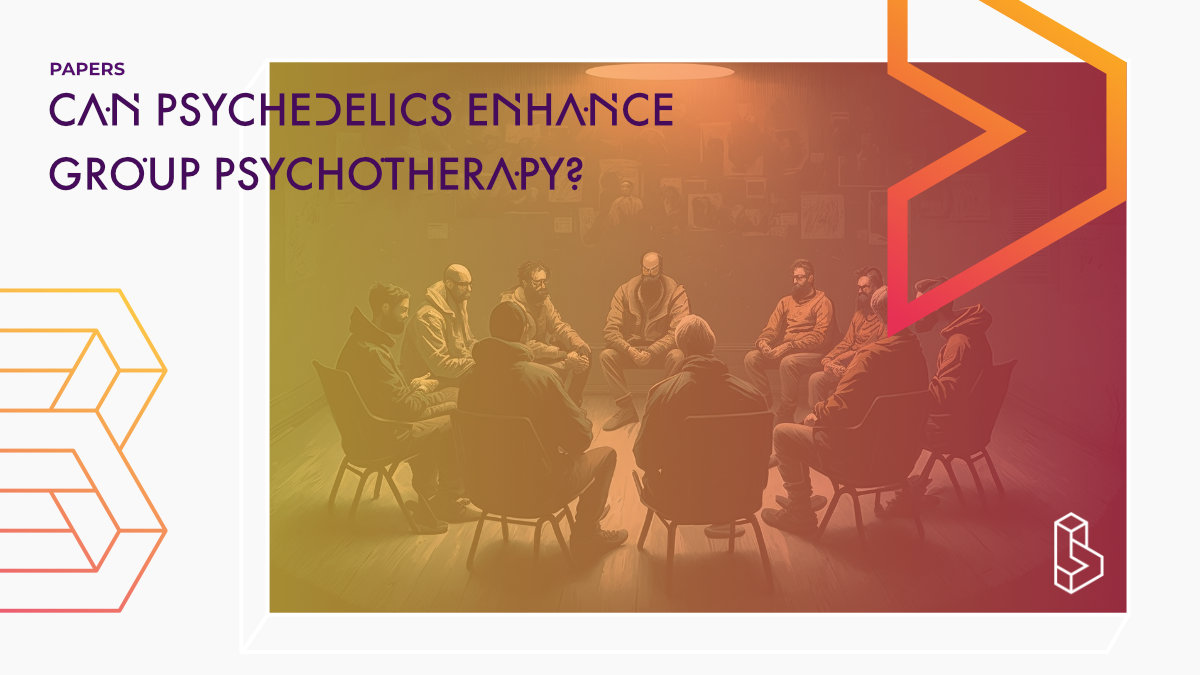This article discusses the therapeutic potential of psychedelic-assisted group psychotherapy (PAGP), which has received less attention than individual psychedelic-assisted psychotherapy models. The authors analyse current literature and use Irvin Yalom’s 11 therapeutic factors of group therapy as a framework to discuss the benefits of PAGP, including increased group connectedness and interpersonal learning.
Abstract
“Background: Despite the growth of psychedelic research, psychedelic-assisted group psychotherapy (PAGP) has received little attention in comparison to individual psychedelic-assisted psychotherapy models.
Methods: In this article, we aim to discuss the therapeutic potential of PAGP, as well as outline existing models and the challenges of this approach. Using Irvin Yalom’s 11 therapeutic factors of group therapy as a basic framework, we analyse current literature from clinical studies and neurobiological research relative to the topic of PAGP.
Results: We argue that combining psychedelic substances and group psychotherapy may prove beneficial for increasing group connectedness and interpersonal learning, potentially enhancing prosocial behaviour with direct opportunities to practice newly acquired knowledge about previously maladaptive behavioural patterns. Challenges regarding this approach include a more rigid therapy structure and potential loss of openness from patients, which may be ameliorated by adequate therapeutic training.
Conclusion: We hope for this article to support clinical research on PAGP by presenting a therapeutic framework and outlining its mechanisms and challenges.“
Authors: Polina Ponomarenko, Federico Seragnoli, Abigail E. Calder, Peter Oehen & Gregor Hasler
Summary of Can psychedelics enhance group psychotherapy?
Social relationships are necessary for mental and physical health. Individual psychedelic-assisted psychotherapy (IPAP) relies on the patient’s perspective and subjective reports of social relationship difficulties. In contrast, psychedelic-assisted group psychotherapy (PAGP) allows the patient, other group members and the therapists to simultaneously experience and observe these difficulties.
In the 21st century, only three empirical studies on group therapy with psychedelics have been conducted. However, before this wave of research, PAGP was extensively studied under the paradigm of psycholytic therapy (more moderate doses of psychedelics, more talk therapy).
Clinical interest in PAGP’s efficacy and potential advantages is growing again, and this article outlines its advantages and disadvantages compared to other methods, particularly IPAP.
Find this paper
Can psychedelics enhance group psychotherapy? A discussion on the therapeutic factors
https://doi.org/10.1177/02698811231155117
Paywall | Google Scholar | Backup | 🕊
Study details
Linked Research Papers
Notable research papers that build on or are influenced by this paper
Psychedelic-Assisted Group Therapy: A Systematic ReviewThis review (2019) investigates what research has been done with psychedelic-assisted group therapy. It identifies 12 studies, mostly with LSD (2 with psilocybin), and ranging from surveys to randomized controlled trials.

